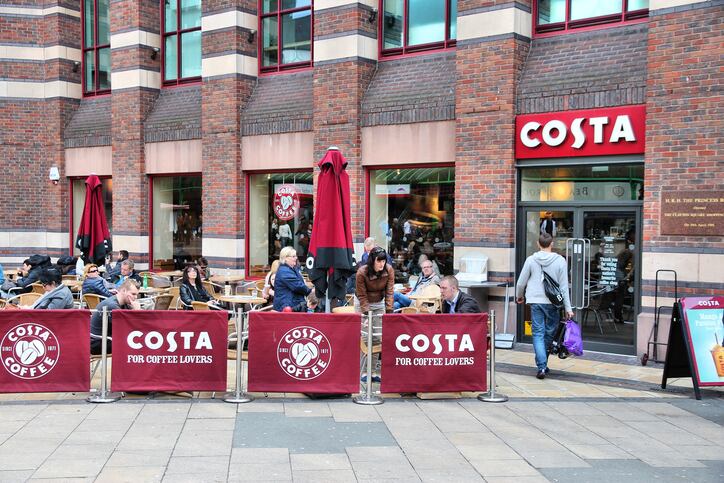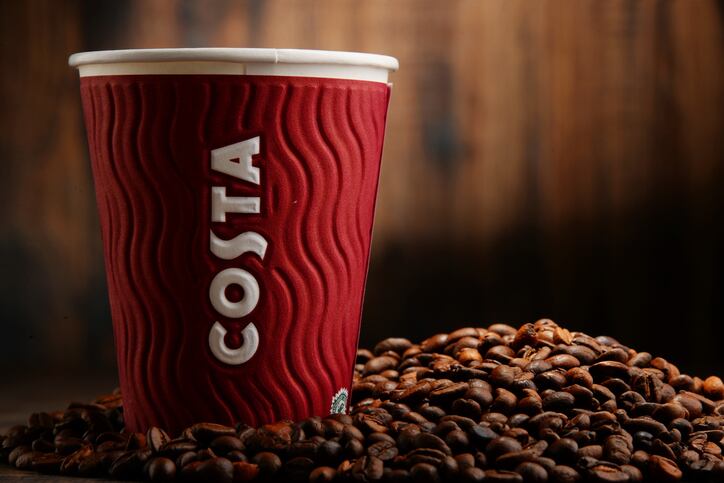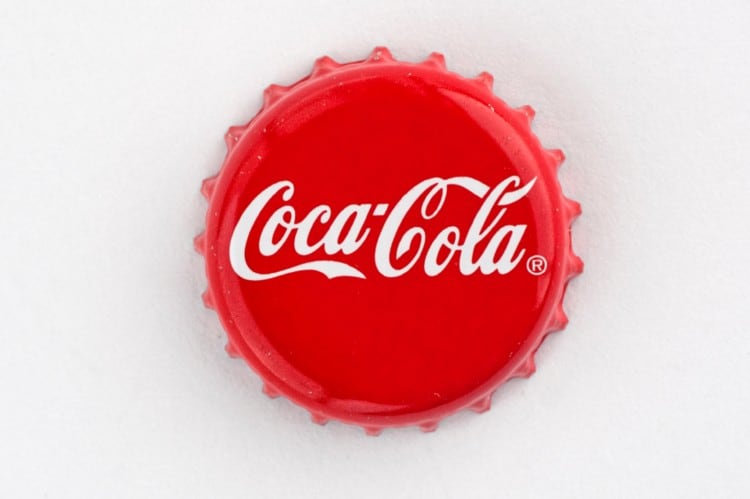Costa was founded in London in 1971, and now has 4,000 retail outlets across the UK and 30 other countries.
The acquisition of Costa Limited from parent company Whitbread PLC for £3.9bn ($5.1bn) includes the brand, 2,400 retail outlets in the UK and 1,600 abroad, a coffee vending operation, for-home coffee formats, Costa’s roaster, and Costa Express, which offers barista-quality coffee at on-the-go locations.
James Quincey, Coca-Cola CEO, said: “Coffee is a significant, on-trend, fast-growing and profitable category. Costa is a strong consumer proposition, it’s got a scalable coffee platform to engage with consumers across multiple formats and channels.
“There is opportunity for great value-creation through the combination of Costa’s capabilities and Coca-Cola’s marketing expertise and global reach”.
Why Costa, and why now?
Simply put, the acquisition helps Coca-Cola leap into one of the fastest-growing beverage categories: coffee. The category has been growing at 6% and is now valued at some $0.5 trillion.
It also helps Coca-Cola on its mission to move beyond soda and into other beverage categories as it seeks to become a ‘total beverage company’. It also broadens its opportunities: a move beyond its core market of the non-alcoholic RTD beverage industry (of some $0.8 trillion) into hot and cold beverages takes its addressable market up to $1.5 trillion, says Quincey.
Coca-Cola has pledged to become a 'total beverage company' - moving beyond soda and into other beverage categories.
Acquisitions to date have included a broad spectrum of categories: such as Latin American soy-based beverage AdeS (2017), premium sparkling mineral water Topo Chico (2017), and RTD tea Honest Tea (2011), as well as taking minority stakes in cold-pressed juice Suja Juice (2015) and sports drink Bodyarmor (2018).
It is also experimenting with other beverage categories in-house: such as its lemon flavored alcoholic beverage in Japan.
Quincey explains: “Coffee helps us get into hot beverages. Coffee is one of the fastest-growing beverage categories in the world, at 6%. It’s also a category with many different elements, from vending to coffee shops to roast-and-ground to instant to pods and capsules.
“In short, coffee is a big business with many formats. It’s also a remarkably fragmented business. No single company in the world has a strong foothold across all parts of coffee. And that includes Coca-Cola. We have great brands like our ready-to-drink Georgia coffee line-up in Japan, but Coca-Cola doesn’t have a broad, global portfolio in this growing category.”
Here's five key points Quincey has to make about the acquisition.
1) Potential for expansion
Quincey says that Costa’s existing presence in more than 30 countries across Europe, the Middle East, Africa and Asia Pacific is proof that the brand can grow successfully outside the UK.
The exact geographies and formats it expands into will have to be decided market by market.
“Clearly, we’re going to have to work,” said Quincey. “We know from our global business that the world is not flat. There’ll be nuances; there’ll be twists and turns, and that is as much about positioning the brand as which of the formats to emphasize by geography.”
Quincey downplays the potential of opening Costa stores in the US, given the high number of coffee shops already present in the country and firmly established coffee culture, but other coffee formats could be introduced in this market. But he does point to the expansion of stores in Europe, Middle East, Africa and particularly Asia.
In terms of formats, Quincey highlights RTD. “Costa offers great opportunities in ready-to-drink beverages,” he said. “Coca-Cola has bottled and canned coffees in a few markets – think Georgia coffee in Japan. The Costa brand has potential for expansion into ready-to-drink coffee across many markets globally.”
2) ‘Connected, not integrated’
Quincey highlights that Costa will continue to operate in a similar manner as it does today, rather than being engulfed into Coca-Cola’s business.
“It’s very important to me that we let Costa be Costa,” he said. “We’ll operate Costa with our successful, connected-but-not-integrated model within Coca-Cola. Costa is a very different business for us, and we want current Costa employees – from executives in the UK to baristas in stores around the world – to be assured that we respect and value their expertise.”
3) Can Coca-Cola crack the retail category?

A key question for analysts is why Coca-Cola has taken a step into the retail category – and why it is confident it can be a success in this sector.
“The starting point is to recognize that retail is different,” said Quincey, and again points to its ‘connected not integrated’ strategy.
“Our strategy here is to retain and let leave in place and let the existing management who have done a great job in running the retail format, let them run the retail format. They’re the ones who know what they’re doing.
“If and as we expand, they need more of the same capability, then, they’ll do a great job of recruiting more people to help them out. And so, I think, that’s really important in this overall strategy that we recognize that.”
4) ‘This is a coffee strategy, not a retail strategy’
But Quincey emphasises that the important point is that its acquisition is first and foremost a strategy in coffee, not a strategy to get into retail. Retail is simply part of its larger strategy in coffee, with the stores playing an important role in building the coffee category and coffee culture.
“These outlets, apart from being a great business so they have a great return on capital, are part of building the whole category of coffee and espresso-based coffee,” he said.
“Now, in some parts of the world that whole modus of drinking coffee is already developed, so we don’t need to invest in the stores necessarily other than for brand building. Other parts of the world, the habit still needs to be developed.”
5) Straight in with the big guys
Coca-Cola wants to burst into the coffee scene at full strength, hence its decision to buy Costa, said Quincey (‘We don’t want to buy a fixer-upper’).
“It suits us best to buy a category leader,” he said.“It’s old company, it’s proven to win in the UK marketplace. And therefore buying something that’s a winner regionally and taking it globally suits us much better.
“And they really have great-tasting coffee. And I think that’s what helped them win, great-tasting coffee, great stores, great brand experience, and they’ve been able to win. And they’ve complemented it as time has gone on with these other formats, whether it’s the vending, the beans; they’re right on the cusp of doing more at-home, ready-to-drink coffee is right in front that can easily be done from where we are.
“So, I think that’s what it’s all about. It’s a coffee strategy, not a retail strategy.”



